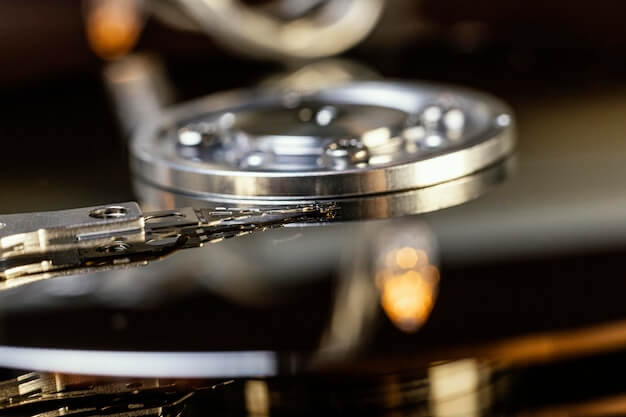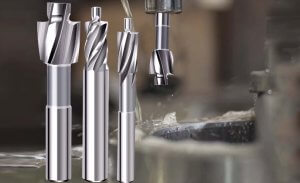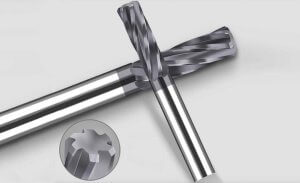Precision CNC Machining in Aviation
In the realm of high-performance aircraft engineering, Precision CNC (Computerized Numerical Control) machining has emerged as a crucial aspect. This technology simplifies complex geometries and curves that are common in various engine components while maintaining an impeccable level of accuracy. A major catalyst of progression in modern aviation, precision CNC machining provides reliable repeatability which is fundamental for mass production; it allows for the manufacture of all engine parts to be uniform, hence ensuring seamless compatibility among them. The process mitigates the risk of costly human errors commonly encountered with traditional manual machining.
- The machine’s software reads CAD (Computer-aided design) models designed by engineers and efficiently translates these intricate plans into a finished product.
- User-friendly interface offers a solid platform for swift prototyping, revolutionising both manufacturing speed and productivity levels within the aviation industry.
- Durability under stringent conditions is paramount in aviation – CNC machined parts demonstrate this due to their heightened density and resilience compared to manually produced ones.
- Aircraft components manufactured using this automated approach consequently display enhanced performance and longevity.
Understanding High-Performance Aircraft Engines
Aircraft engines are complex mechanisms which provide the proof of an aircraft’s functionality, and understanding their operations is critical. Essential components such as the compressor, combustion chamber, turbine, and exhaust nozzles each play a significant role in driving engine performance. The compressor helps intake air at high speeds; the combustion chamber mixes this air with full volume fuel for ignition; the turbine propels the output from combustion to generate mechanical power; and finally, the exhaust function expels the resulting gases.
- The Compressor: intakes air and pressurizes it before sending it to the combustion chamber.
- The Combustion Chamber: where the compressed air merges with fuel under high pressure, causing ignition.
- The Turbine: extracts energy from high-temperature, high-pressure gas produced in the combustion chamber and utilizes it to drive the compressor and other parts of the engine.
- The Exhaust: gets rid of combustion products out of the back of the engine, producing thrust.
When discussing ‘high-performance’ criteria, one generally refers to characteristics like fuel efficiency, reduced emissions, noise reduction, and improved lifecycle costs. To attain optimal performance level, we utilize precision CNC machining that ensures intricate detailing of aerospace materials, leading to increased strength-to-weight ratio and higher resistance to temperature variations – major factors affecting aircraft engines’ overall operation and life expectancy
The Interrelation between Precision CNC Machining and Aircraft Engines:
- Step 1: Precision CNC machining plays a critical role in the manufacturing of high-performance aircraft engines by ensuring the production of intricate and high-quality components.
- Step 2: Leveraging the Precision Machining Service to achieve the required level of precision and accuracy in fabricating components for aircraft engines.
- Step 3: Precision CNC machining techniques contribute to the development of engine parts with exceptional performance and reliability, meeting the stringent requirements of the aviation industry.
- Step 4: The use of precision CNC machining is essential for creating components that enhance the overall performance and efficiency of high-performance aircraft engines.
Benefits of Using Precision CNC Machining in Engine Manufacturing
The implementation of precision CNC machining in the manufacture of aircraft engines brings an array of substantial benefits. Primary among these are the significant increases in efficiency and accuracy, greatly minimizing potential errors usually seen in traditional manual manufacturing processes. The use of automated computer-aided design (CAD) and computer-aided manufacturing (CAM) systems enable accurate translation of technical designs into commands that the machine can interpret, therefore ensuring precise repeatability regardless of component size or intricacy.
This directly translates to reduced material waste as only necessary sections are carved out from metal blocks to form relevant parts, thereby conserving resources. Additionally, due to its high level of accuracy and consistency, CNC machined parts are known for their enhanced durability achieved through seamless fits between components due clearances being met consistently during production.
- Increase in Efficiency: Precision CNC machining drastically enhances operational efficiency. This result is primarily because it allows continuous operations without demanding manual intervention.
- Increased Accuracy: Utilizing this advanced technology leads to significantly higher precision compared with manually controlled machinery; this means, even complex three-dimensional shapes can be accurately produced according to pre-set specifications.
- Decreased Waste: Precision CNC machining optimizes raw material utilization by reducing waste generated during production phases.
- Durability: By ensuring optimum fit and clearance between constituent elements, the overall product durability is enhanced considerably.
Precision CNC Machining and Aircraft Performance Enhancement
Precision CNC machining plays an instrumental role in enhancing the performance of high-performance aircraft engines. The essential nature of precision parts significantly affects the overall function of the aircraft, ensuring the smooth operation of all integrated systems. This is often achieved by maintaining tolerances within mere thousandths of an inch, hence prompting improved efficiency, increased safety, resistance to wear and tear, and longer life span of the engine.
As an instance, the aerospace industry frequently uses CNC machined turbine blades. These are critical for efficient propulsion. With sophisticated geometric profiles that can only be replicated using precision CNC methods, these blades need to withstand extreme conditions such as high velocity and temperature variations enabling optimal performance. Another example can be drawn from the manufacturing of fuel injection systems which have tiny orifices handcrafted with utmost accuracy. Impeccably drilled holes ensure appropriate atomization of fuel, contributing crucially to the combustion process, and thus improving the performance of the plane.
- CNC machined turbine blades provide efficient propulsion
- Precision machined fuel injections contribute to effective combustion
With streamlined designs, reduced waste, and uncompromised adherence to exact dimensions, precision CNC machining sets up a blueprint for excellence in modern aviation. Consequently, its integration enhances energy efficiency, power output, and operating speed- fundamentally elevating machine reliability and total aircraft performance.
Challenges and Solutions in Precision CNC Machining for Aircraft Engines
In the realm of the aerospace sector, precision CNC machining grapples with manifold challenges that could potentially impact the performance efficiency of aircraft engines. Issues often encountered entail maintaining ultra-precision tolerances during high-speed machining processes while simultaneously managing heat generation which can distort or damage components.
A viable solution to these issues hinges on advanced cooling systems and using cutting-edge software algorithms that optimally control tooling paths and feed rates thus ensuring production consistency. Another common challenge is dealing with difficult-to-machine materials like Inconel or titanium – frequently used for their high-temperature properties but notorious for wearing down tools quickly.
To combat this, employing more robust carbide materials or diamond-like coatings for machining end mills has proved effective prolonging tool life and in turn, reducing overall operating costs. Furthermore, constant technological advancements have led to increased accessibility of multi-tasking machines capable of concurrently executing several functions such as milling, drilling, and turning, significantly augmenting productivity levels and streamlining operations making precision CNC machining an indispensable part of modern aircraft engine manufacturing.
Other Articles You Might Enjoy
- Innovative CNC Machining for Advanced Spacecraft Components
Introduction: CNC Machining and its role in Spacecraft Components Computer Numerical Control (CNC) machining has, over the years, proven to be one of the most integral pillars within manufacturing industries.…
- Titanium Grade 5 vs. Grade 23 in CNC Machining: Which Provides Superior Performance?
Introduction to CNC Machining and Titanium Grades CNC Machining, short for Computer Numerical Control machining, is a manufacturing process which employs computerized controls to manipulate different types of machinery such…
- Understanding Bead Blasting in CNC Machining(tin coating Aldrich)
Bead blasting, an integral process within the world of Computer Numerical Control (CNC) machining, is a fascinating technique that provides a distinct finish to manufactured parts. This process escalates the…








